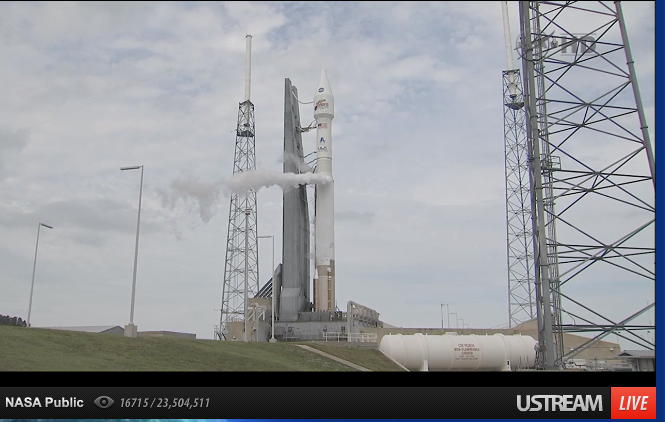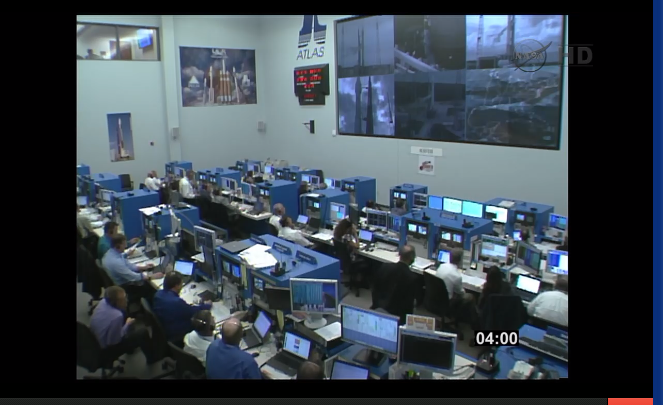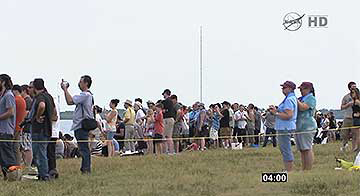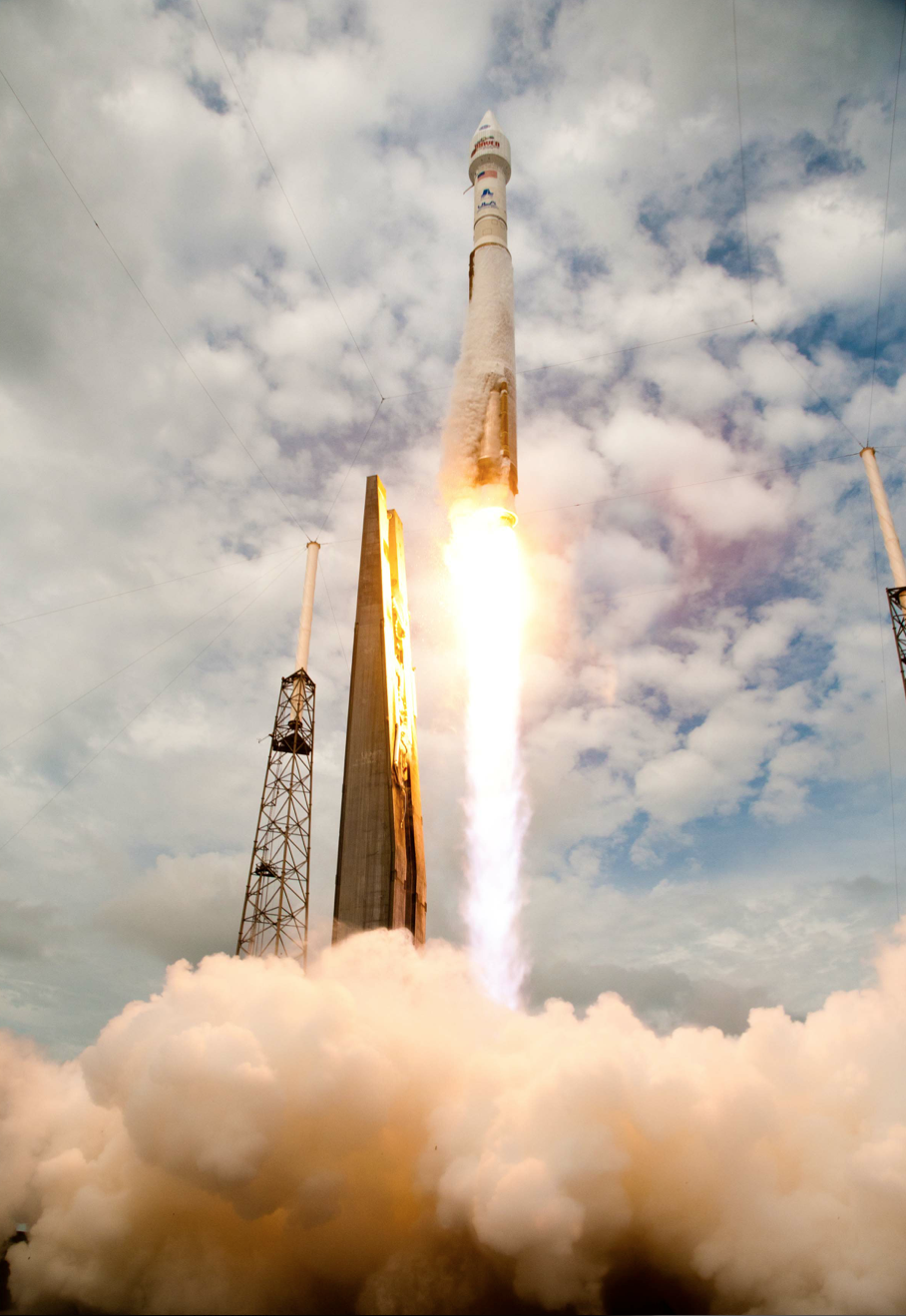[SatNews] The mission..to assess the mysteries of Mars.

Ready...
United Launch Alliance chalks up another successful launch for NASA. Today's was a perfect Atlas V launch at Space Launch Complex 41 at Cape Canaveral Air Force Station in Florida. SatNews.com will be providing ongoing information as it becomes available.
United Launch Alliance Atlas V Rocket Successfully Launches MAVEN Mission on Journey to the Red Planet
Cape Canaveral Air Force Station, Florida, (Nov. 18, 2013) ' A United Launch Alliance (ULA) Atlas V rocket carrying NASA's Mars Atmosphere and Volatile EvolutioN (MAVEN) spacecraft lifted off from Space Launch Complex-41 here at 1:28 p.m. EST today. This was ULA's 10th launch of the year and marks the 41st Atlas V mission and the 76th launch for ULA.

Set...
"United Launch Alliance is proud to be a part of this tremendous mission, working closely with the NASA Launch Services Program and MAVEN teams," said Jim Sponnick, ULA vice president, Atlas and Delta Programs. Missions to Mars are very exciting and over the last decade, ULA launch systems have been entrusted to launch all of NASA's missions to the red planet, including the Spirit and Opportunity rovers and most recently the Mars Science Lab mission with the Curiosity rover."
This mission was launched aboard an Atlas V 401 configuration vehicle, which includes a four-meter diameter payload fairing. The Atlas booster for this mission will be powered by the RD AMROSS RD-180 engine and the Centaur upper stage will be powered by a single Aerojet Rocketdyne RL10A engine.
"In just a few days, the Centaur upper stage will celebrate its 50th anniversary since its first successful launch," said Jim Sponnick, ULA vice president, Atlas and Delta Programs. "Centaur has a rich heritage dating back to the beginning of human spaceflight and continues to reliably deliver critical science missions for NASA."
MAVEN will examine specific processes on Mars that led to the loss of much of its atmosphere. Data and analysis will help planetary scientists understand the history of climate change on the red planet and provide further information on the history of planetary habitability.

Set..
ULA's next launch is the Atlas V NROL-39 mission for the National Reconnaissance Office scheduled for December 5 from Space Launch Complex-3 at Vandenberg Air Force Base, California.
ULA program management, engineering, test, and mission support functions are headquartered in Denver, Colorado. Manufacturing, assembly and integration operations are located at Decatur, Alabama, and Harlingen, Texas. Launch operations are located at Cape Canaveral AFS, Florida, and Vandenberg AFB, California.
The MAVEN spacecraft will be the first probe to directly assess the mysteries of the atmosphere of Mars. Previous missions clearly show the past presence of water, but how it and the other gas components were lost is uncertain. Some may have been stripped away by the Sun, while others may still be on Mars, absorbed into its crust. MAVEN will determine the present state of the upper atmosphere and today's rates of loss to space, which will enable determination of the net integrated loss to space through time.

Cape Canaveral Air Force Station, Fla. (Nov. 18, 2013) A United Launch Alliance (ULA) Atlas V rocket carrying NASA's Mars Atmosphere and Volatile EvolutioN (MAVEN) spacecraft lifted off from Space Launch Complex-41 at 1:28 p.m. EST today. MAVEN will examine specific processes on Mars that led to the loss of much of its atmosphere. Data and analysis will help planetary scientists understand the history of climate change on the red planet and provide further information on the history of planetary habitability. Photo by Pat Corkery, United Launch Alliance
Weighing more than 5,600 lbs at launch, the spacecraft will generate 1,135 watts of power when it arrives in orbit via its solar panels. The solar panels have been designed in a 'gull wing' configuration to help stabilize the spacecraft as it dives through the Martian atmosphere as well as to carry magnetic field instruments at each tip. The fixed main antenna will not only return global data from the primary atmospheric mission, but will also serve as a data relay for future missions.
Manufactured by Lockheed Martin Space Systems for NASA's Goddard Spaceflight Center (GSFC), the spacecraft carries instruments provided by GSFC, the Colorado University Laboratory for Atmospheric and Space Physics, and the Space Sciences Laboratory at UC Berkeley. The spacecraft includes an Articulated Payload Platform (APP), which is a deployable boom with a wide range of attitude capability. The APP will precisely point three instrument packages on its tip to sample the Mars atmosphere. This suite of instruments includes the Neutral Gas and Ion Mass Spectrometer, the Imaging Ultraviolet Spectrometer, and the Suprathermal and Thermal Ion Composition instruments.
A separate deployed boom provides standoff from the spacecraft for the Solar Wind Electron Analyzer. Instruments mounted on the spacecraft body provide detailed measurements of the Sun's electrons, ions, particles, and radiation. Two additional booms measure electron temperature and density.
Together, these instruments will provide unprecedented insight into Mars as it exists today, and how it was in the past.
The MAVEN mission will be flown on an easterly trajectory from Space Launch Complex 41 at Cape Canaveral Air Force Station (CCAFS), FL. The MAVEN spacecraft will be released into a hyperbolic Earth escape orbit to Mars.
The mission begins with ignition of the RD-180 engine approximately 3.8 seconds prior to liftoff. Shortly after the vehicle clears the pad, it performs its pitch/yaw/roll maneuvers. Following maximum dynamic pressure, the RD-180 is throttled down to 95 percent. Guidance steering is enabled approximately 140 seconds into flight. Booster engine cutoff (BECO) occurs 242.4 seconds into flight followed by Centaur separation 6 seconds later.
Approximately 4 minutes into flight, the Centaur stage ignites its main engine (MES1). Eight seconds into the burn, the payload fairing is jettisoned. Over the Atlantic Ocean the burn lasts 9.5 minutes, and uses a special steering profile. This profile optimizes the trajectory for the interplanetary target, placing the vehicle into a unique parking orbit tailored for the day and time of launch. Following a 24-minute coast, the Centaur main engine is ignited for a second burn (MES2), lasting 5.5 minutes. Following Centaur engine shutdown (MECO2), the vehicle turns to the separation attitude and delays separation for approximately 3 minutes to ensure that the down range Deep Space Network stations will have contact with MAVEN during the separation event. Separation occurs over Australia at approximately 53 minutes after launch.

